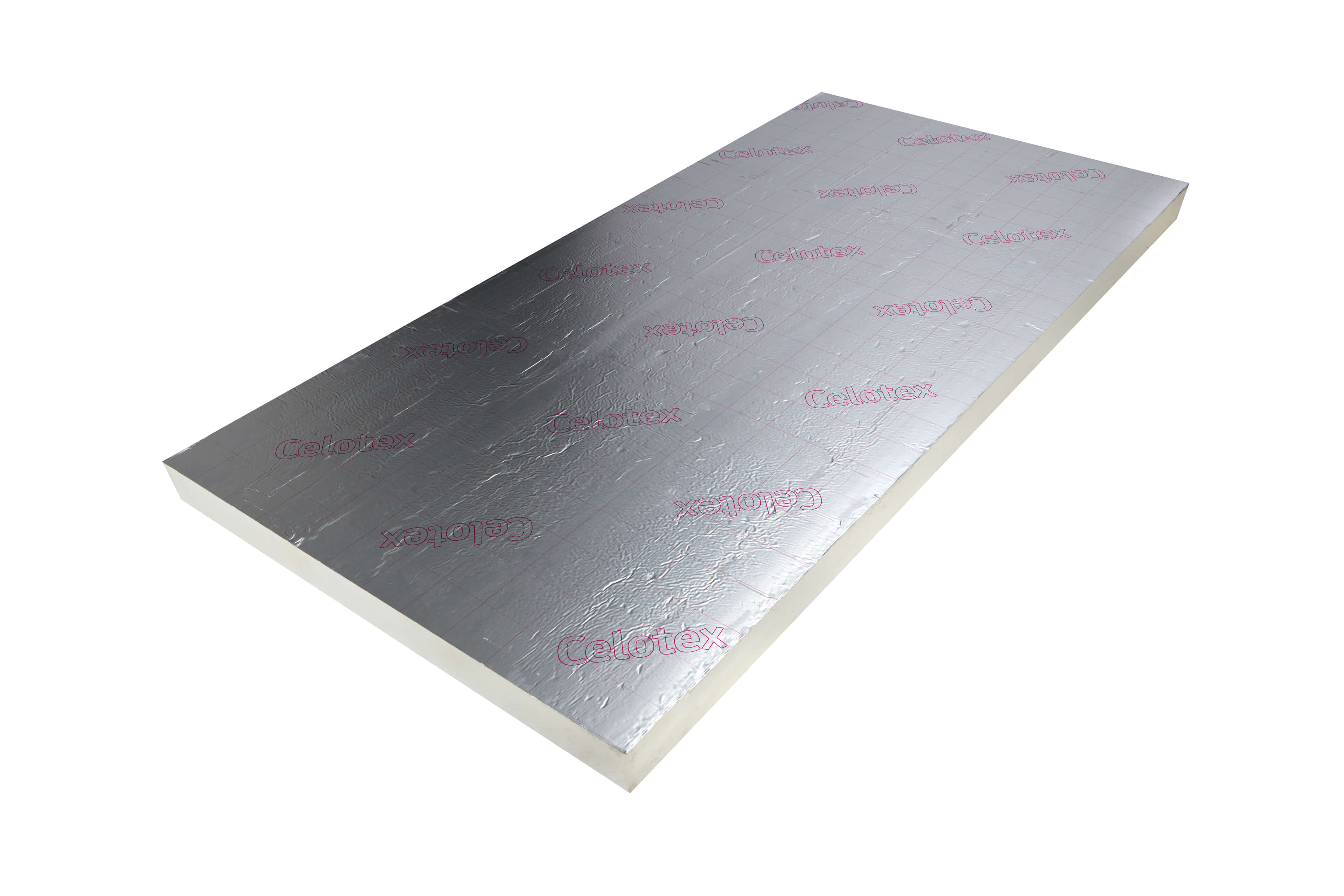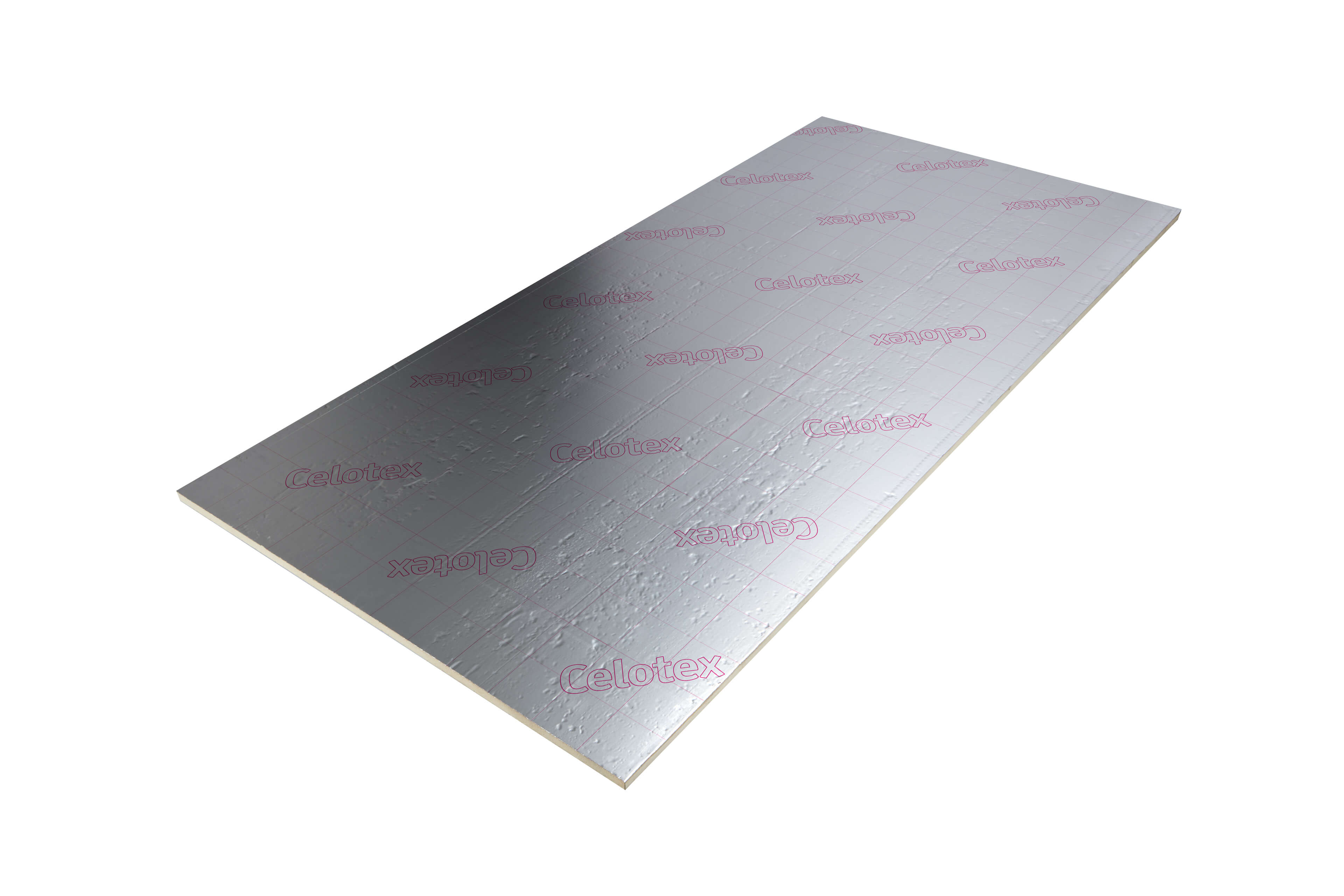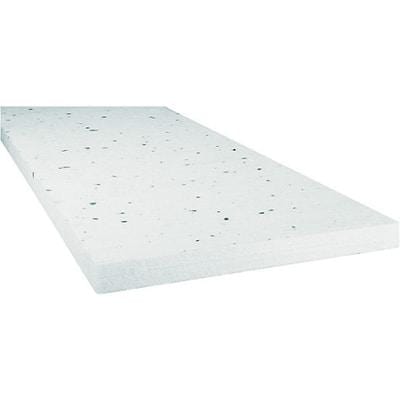Insulation Boards
(102 Products)Insulation boards represent a smart, long-term investment in both the performance and value of a property. They offer immediate benefits in thermal comfort while delivering consistent, year-over-year savings through reduced energy consumption.
Beyond energy efficiency, insulation boards also enhance structural durability and support occupant well-being. Taken together, these advantages make them one of the most effective and worthwhile upgrades for any building, offering value that extends well beyond the initial installation.
What are Insulation Boards?
Insulation boards are insulating panels made from materials with a very low thermal conductivity, meaning they are inherently poor conductors of heat. Their fundamental purpose is to resist the transfer of heat through the building envelope - the floors, walls, and roof that separate the conditioned interior from the fluctuating outdoor environment.
The key differentiators for insulation boards, when compared to fibrous rolls or batt insulation, are their rigidity and their high performance-to-thickness ratio. This makes them especially useful where space is limited, such as in loft conversions or internal wall linings, where maximising thermal efficiency without sacrificing room is essential.
Available in a variety of core material types - including PIR (polyisocyanurate), phenolic foam, EPS (expanded polystyrene), and XPS (extruded polystyrene) - each board type brings its own set of strengths.
PIR boards, for example, offer some of the lowest thermal conductivity values on the market, while XPS provides excellent moisture resistance, making it ideal for below-ground or floor insulation.
Most insulation boards are easy to cut and handle, and many feature foil facings which act as an additional vapour barrier - helping to control condensation in roof and wall assemblies. Some boards also incorporate tongue-and-groove edges for a tighter fit and reduced thermal bridging.
Types of Insulation Board
PIR (Polyisocyanurate) Insulation Boards
- What Are They: A high-performance, thermoset plastic foam, widely regarded as one of the most thermally efficient insulation materials on the market.
- Key Characteristics: Outstanding thermal performance-to-thickness ratio, meaning you get a lot of insulating power from a relatively slim board. These boards are almost always faced with foil on both sides, which acts as a built-in vapour control layer and reflects radiant heat.
- Best For: Insulating walls, floors, and roofs, especially in situations where space is limited and achieving a high level of insulation is critical to meet modern Building Regulations.
XPS (Extruded Polystyrene) Insulation Boards
- What Are They: A dense, rigid foam with a closed-cell structure, easily identifiable by its distinct colour (often blue, pink, or green).
- Key Characteristics: Closed-cell structure provides excellent resistance to both moisture ingress and water retention. Coupled with high compressive strength, XPS is well-suited to applications that demand durability and dimensional stability under load.
- Best For: Demanding and damp environments - insulating basement walls, below-concrete-slab floors (below-grade), inverted flat roofs, and situations where moisture resistance and strength are crucial.
EPS (Expanded Polystyrene) Insulation Boards
- What Are They: A lightweight yet rigid foam made from fused polystyrene beads, best known for its bright white colour.
- Key Characteristics: EPS is a highly versatile and cost-effective insulator. While its thermal performance per inch is generally not as high as PIR or XPS, it provides excellent value and can be specified in various densities to achieve different compressive strengths.
- Best For: A wide range of general-purpose applications where a balance of thermal insulation and budget is needed. This includes use within cavity walls, external wall insulation systems, and as floor insulation where extreme loads or high moisture levels are not a primary concern.
Applications
Insulation boards are a go-to solution for insulating almost every part of a building's thermal envelope:
- Wall Insulation Boards: Used extensively in timber frame walls, between studs in partition walls, within masonry cavity walls, or for lining the inside or outside of solid walls. They create a continuous insulated layer that drastically reduces heat escaping through the building's vertical surfaces.
- Floor Insulation Boards: Essential for preventing heat loss into the ground or unheated spaces below. They are used in solid concrete floors (placed either above or below the concrete slab) and are cut to fit between joists in suspended timber floors, helping to eliminate cold drafts and create warmer, more comfortable living areas.
- Roof Insulation Boards: A critical application, as significant heat is lost through the roof. These boards are used to insulate pitched roofs (fitted between, over, or under the rafters) and are a primary component in creating warm, energy-efficient flat roof systems.
Benefits
- Thermal Performance: Provides a high level of insulation for their thickness, significantly reducing heat loss and helping to lower energy bills.
- Space-Saving Slim Profile: Achieves impressive insulation values without the bulk of some other materials, saving valuable room space and making them ideal for modern construction.
- Highly Versatile: Suitable for a wide range of applications throughout a building, including insulating walls, floors, pitched roofs, and flat roofs.
- Structurally Robust: Rigid boards are strong, resistant to compression (especially floor-grade versions), and can be handled on site with minimal risk of damage.
- Moisture Resistance: The closed-cell structure of many rigid foam boards (like PIR) means they do not readily absorb moisture, protecting their long-term performance.
- Lightweight: Simple to transport, can be cut to size with standard saws, and are straightforward to fit and fix in place.
- Creates a Continuous Vapour & Air Barrier: When foil-faced joints are correctly taped, insulation boards can create a continuous layer that helps control air leakage and prevent moisture from passing into the building structure.
Installation Tips
- Tight Fit is Crucial: Cut boards accurately and ensure they are tightly butted together to avoid gaps. Any gaps can create "thermal bridges," which significantly reduce the overall effectiveness of the insulation layer.
- Use Correct Fixings: Secure boards with the appropriate mechanical fixings or adhesives for the specific substrate and application.
- Tape the Joints: Where a continuous vapour control layer or air barrier is required, it is essential to tape all joints between the boards with a suitable aluminium foil tape.
- Follow Manufacturer's Guidance: Always read and follow the specific installation instructions provided by the manufacturer of the insulation board you are using.
Frequently Asked Insulation Boards Questions
How Do You Prevent Thermal Bridging When Installing Insulation Boards?
A thermal bridge is a gap in the insulation layer that allows heat to escape more easily, creating cold spots and reducing overall efficiency. To prevent this when installing insulation boards, it is crucial to:
- Ensure boards are tightly butted together with no gaps.
- Use lapped joints where possible (some boards have tongue-and-groove edges).
- Tape all joints between foil-faced boards with aluminium foil tape to create a continuous air and vapour barrier.
- Pay special attention to junctions between walls, floors, and the roof, ensuring the insulation layer is continuous.
Which Way Round Should Foil-Faced Insulation Boards Be Installed?
When installing foil-faced insulation boards (like PIR) against an external masonry wall or within a timber frame, it is standard practice to place the unprinted foil facing towards the cavity or masonry wall.
The side with the printed branding and technical information should face outwards, into the room, before the final plasterboard layer is added.
For some specific applications, manufacturer guidance may vary, so always check the product datasheet.
Can Insulation Boards Be Fixed Over The Top Of Timber Battens?
Yes, insulation boards can be fixed over the top of a timber batten framework. In this method, the battens are first secured to the wall. The insulation boards are then cut to size and fixed directly to the face of the battens.
It is crucial to ensure that when joining two boards together, the joint is positioned over the centre of a timber batten to provide solid support for both board edges and subsequent fixings.
What Should I Do With Offcuts Of Insulation Boards During Installation?
To maximise material use and ensure a complete insulated layer, any clean, well-fitting offcuts of insulation board can and should be used to fill any smaller gaps left within the framework, such as around windows or in corners. This helps to create a continuous thermal barrier and reduces waste on site.
Do I Need To Consult A Professional Before Insulating My Walls?
Yes, it is always highly recommended to consult a building professional, architect, or qualified installer before starting any internal wall insulation project. They can help ensure you are using the correct product and method for your specific property type and that you are complying with current Building Regulations.
In many cases, approval for the work may also be required, so this should be confirmed before any installation begins.














.jpg)
















